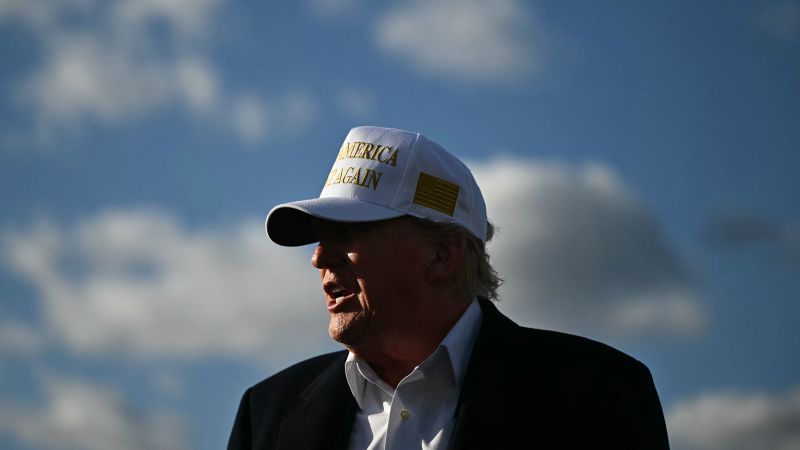The recent gathering in the majestic St. Peter’s Basilica marked a significant moment in international diplomacy, as U.S. President Donald Trump engaged in an unprecedented face-to-face meeting with his Ukrainian counterpart, Volodymyr Zelensky. This encounter, occurring amidst the backdrop of solemn homage to the late Pope Francis, drew the eyes of numerous world leaders present. The respected grandeur of the Basilica contrasted sharply with the whirlwind atmosphere surrounding the two leaders momentarily stepping aside from the designated ceremonies.
As dignitaries and world officials navigated the sacred space, men clad in black robes hurriedly set up red-cushioned chairs. Members of the American Secret Service stood watch, remaining vigilant yet discreet, allowing the conversation bubble between Trump and Zelensky to unfold with minimal intrusion. This meeting came roughly two months after a contentious Oval Office confrontation led to Zelensky’s abrupt eviction from the White House, setting the stage for a potentially pivotal dialogue.
Following their discussion, Trump remarked the next day, “I see him as calmer,” alluding to Zelensky’s demeanor. This observation suggests a diplomatic thawing, as if both leaders harbor a newfound determination to explore possibilities for peace. The carefully arranged meeting under the Vatican’s elaborate ceilings, noted insiders, was not merely a spontaneous encounter but rather an intentional assembly pushed by European officials eager to salvage the floundering negotiations amidst the ongoing war that has now persisted for three harrowing years.
The importance of this dialogue was underscored by Trump’s strongest denunciation of Russian President Vladimir Putin to date, providing fresh optimism to both Ukraine and global observers that the U.S. President could be shifting his approach to a conflict he initially pledged to resolve at the very onset of his presidency. “I want him to stop shooting, sit down and sign a deal,” Trump stated, emphasizing urgency as he prepared to return to Washington to address crucial matters related to U.S. efforts in brokering peace.
Despite this apparent shift, doubts linger about the consistency of Trump’s toughened stance on Russian aggression. History reveals a pattern of Trump often exhibiting a conciliatory tone toward Putin, sometimes adopting narratives aligned with the Russian leader. Thus, while the meeting held rich symbolic value—taking place in a space where Pope Francis had previously championed for peace—it remains uncertain how meaningful or transformative this encounter will prove to be in the broader quest to halt the conflict.
Remarkably, for a leader previously critical of Zelensky, Trump’s public remarks suggest a notable recalibration of perspective, raising speculation about the dynamics evolving between the two leaders following their dialogue beneath the Basilica’s ornate roof. The nature of their meeting had initially been cloaked in uncertainty, both sides cautious about signaling expectations. Trump’s prelude to Rome hinted at limited engagement, raising questions about the appropriateness of discussing foreign policy at such a somber occasion.
However, the encounter eventually materialized as Vatican officials deftly facilitated an environment for direct talks between Trump and Zelensky, away from the surrounding contingent of global leadership. The seating arrangement, initially inclusive of a chair for a translator, quickly underscored the urgency and intimacy of their conversation, as other political figures, including French President Emmanuel Macron, opted out after initial greetings.
The tone of their discussion remains closely guarded, with minimal specifics disclosed. Reports indicate that Zelensky solicited additional military aid, while the matter of Crimea was briefly revisited—a sensitive topic, given the territory’s annexation by Russia back in 2014. Trump’s response suggested a lack of urgency in this regard, indicating the complexities enveloping any potential agreements.
Approaching his hundredth day in office, Trump’s inability to effectively mediate an end to the war in Ukraine has grown increasingly contentious, with both his advisors and critics reporting frustrations surrounding his diplomatic capabilities. Recent missile strikes in Kyiv during the talks deepened the sense of urgency, raising questions about Putin’s true intentions.
At the close of the week, as discussions pivoted towards the potential for future U.S. engagements, Secretary of State Marco Rubio remarked that the upcoming week would be pivotal in determining future focus areas for American diplomacy. Despite the challenges, Saturday’s discourse between Trump and Zelensky infused a glimmer of optimism that constructive dialogue could indeed pave the way for resolution.
In reflection, Trump’s own comments reveal a degree of awe at the meeting’s remarkable venue, emphasizing its appeal by stating, “It was a beautiful meeting.” The poignancy of St. Peter’s Basilica served as an evocative backdrop to an encounter that could reshape international relations in the months to come, as the world continues to watch the unfolding narrative of peace and conflict in Ukraine.



